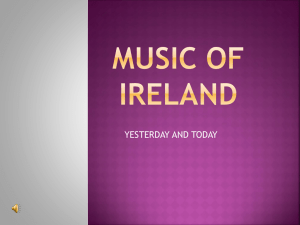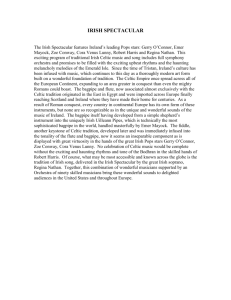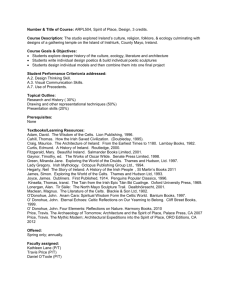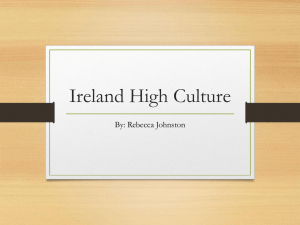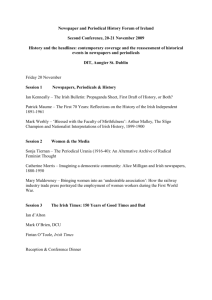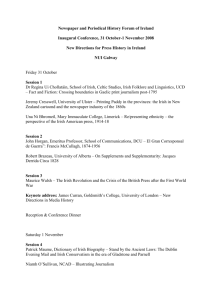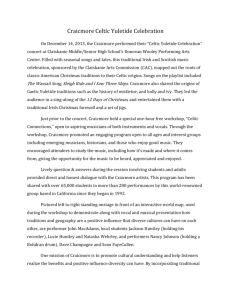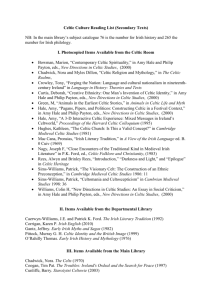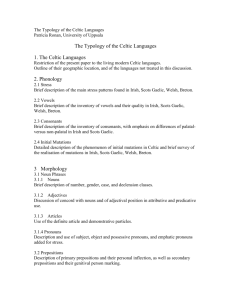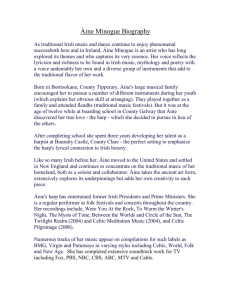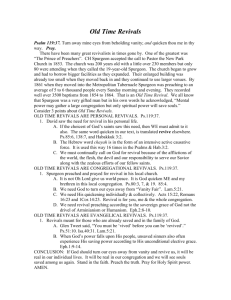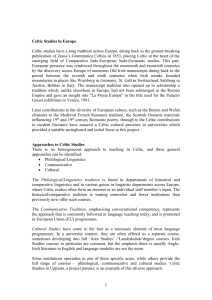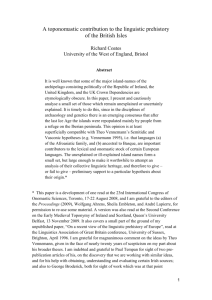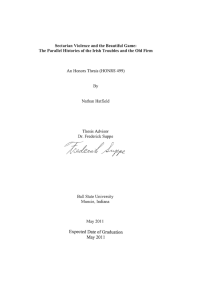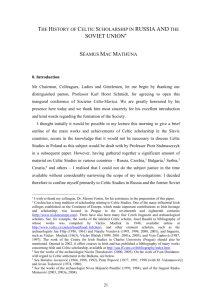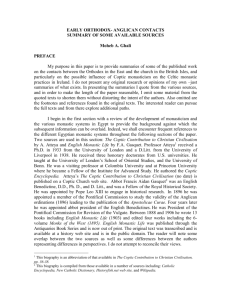Celtic Revival - lecture handout
advertisement
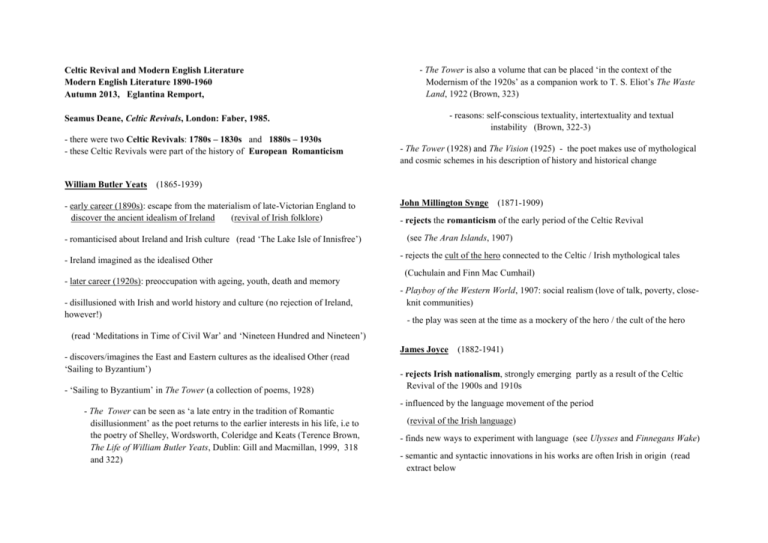
Celtic Revival and Modern English Literature Modern English Literature 1890-1960 Autumn 2013, Eglantina Remport, - The Tower is also a volume that can be placed ‘in the context of the Modernism of the 1920s’ as a companion work to T. S. Eliot’s The Waste Land, 1922 (Brown, 323) - reasons: self-conscious textuality, intertextuality and textual instability (Brown, 322-3) Seamus Deane, Celtic Revivals, London: Faber, 1985. - there were two Celtic Revivals: 1780s – 1830s and 1880s – 1930s - these Celtic Revivals were part of the history of European Romanticism William Butler Yeats - The Tower (1928) and The Vision (1925) - the poet makes use of mythological and cosmic schemes in his description of history and historical change (1865-1939) - early career (1890s): escape from the materialism of late-Victorian England to discover the ancient idealism of Ireland (revival of Irish folklore) - romanticised about Ireland and Irish culture (read ‘The Lake Isle of Innisfree’) - Ireland imagined as the idealised Other John Millington Synge (1871-1909) - rejects the romanticism of the early period of the Celtic Revival (see The Aran Islands, 1907) - rejects the cult of the hero connected to the Celtic / Irish mythological tales (Cuchulain and Finn Mac Cumhail) - later career (1920s): preoccupation with ageing, youth, death and memory - disillusioned with Irish and world history and culture (no rejection of Ireland, however!) - Playboy of the Western World, 1907: social realism (love of talk, poverty, closeknit communities) - the play was seen at the time as a mockery of the hero / the cult of the hero (read ‘Meditations in Time of Civil War’ and ‘Nineteen Hundred and Nineteen’) - discovers/imagines the East and Eastern cultures as the idealised Other (read ‘Sailing to Byzantium’) - ‘Sailing to Byzantium’ in The Tower (a collection of poems, 1928) - The Tower can be seen as ‘a late entry in the tradition of Romantic disillusionment’ as the poet returns to the earlier interests in his life, i.e to the poetry of Shelley, Wordsworth, Coleridge and Keats (Terence Brown, The Life of William Butler Yeats, Dublin: Gill and Macmillan, 1999, 318 and 322) James Joyce (1882-1941) - rejects Irish nationalism, strongly emerging partly as a result of the Celtic Revival of the 1900s and 1910s - influenced by the language movement of the period (revival of the Irish language) - finds new ways to experiment with language (see Ulysses and Finnegans Wake) - semantic and syntactic innovations in his works are often Irish in origin (read extract below James Joyce, Ulysses (book format 1922) - Do you understand what he says? Stephen asked her. - Is it French you are talking, sir? the old woman said to Haines. Haines spoke to her again a longer speech, confidently. - Irish, Buck Mulligan said. Is there Gaelic on you? - I thought it was Irish, she said, by the sound of it. Are you from the west, sir? - I am an Englishman, Haines answered. - He’s English, Buck Mulligan said, and he thinks we ought to speak Irish in Ireland. - Sure we ought to, the old woman said, and I’m ashamed I don’t speak the language myself. I’m told it’s a grand language by them that knows.


